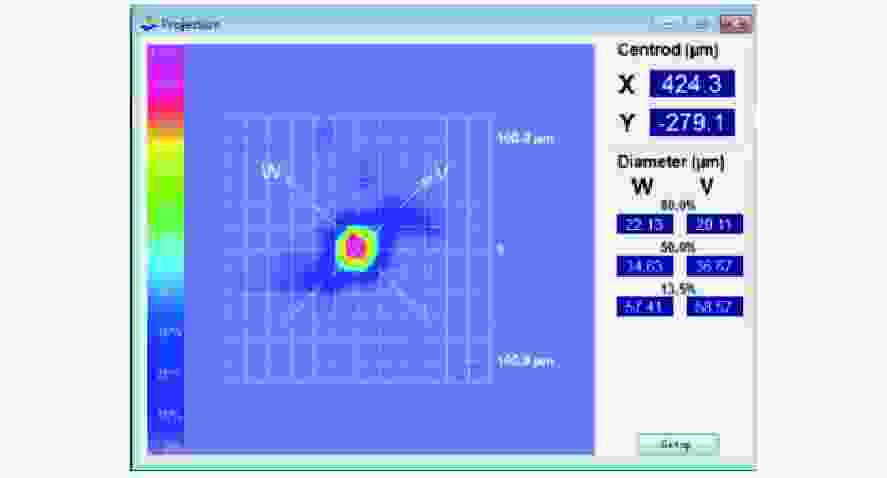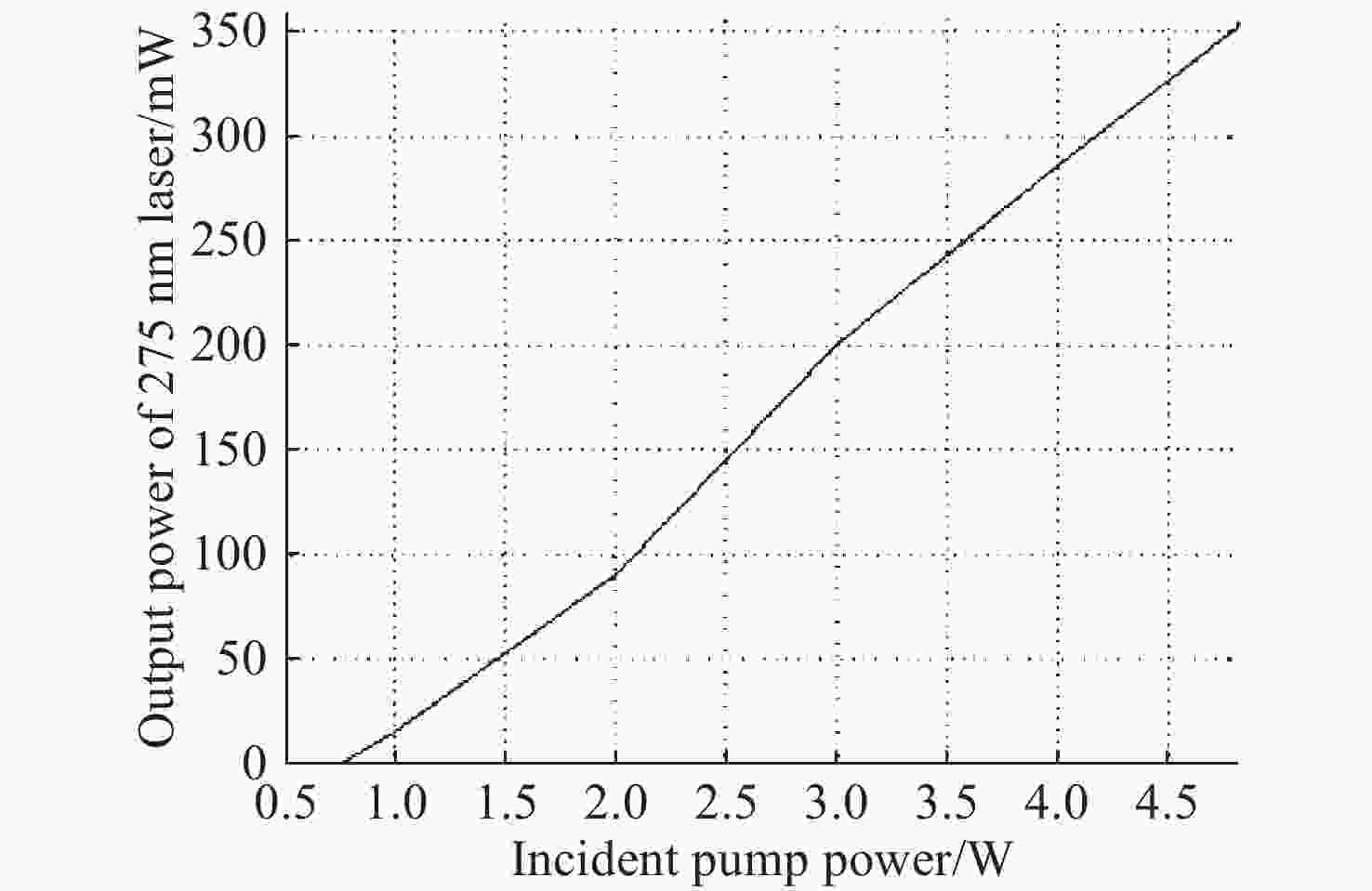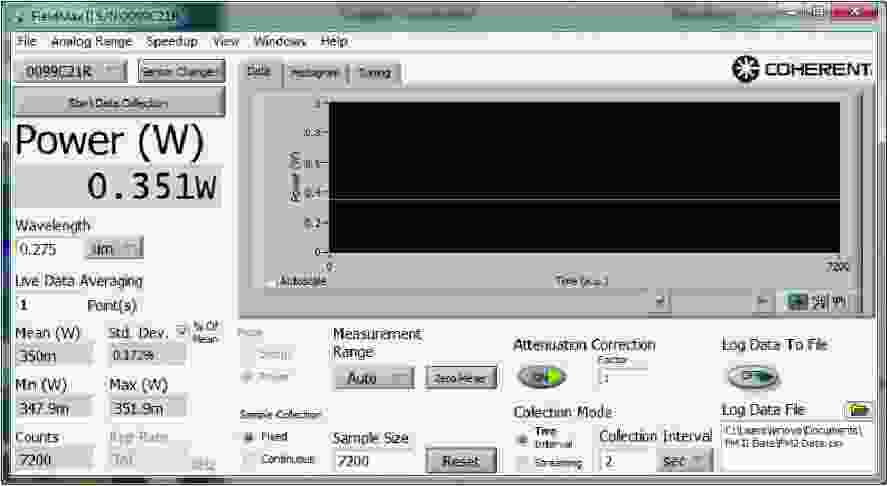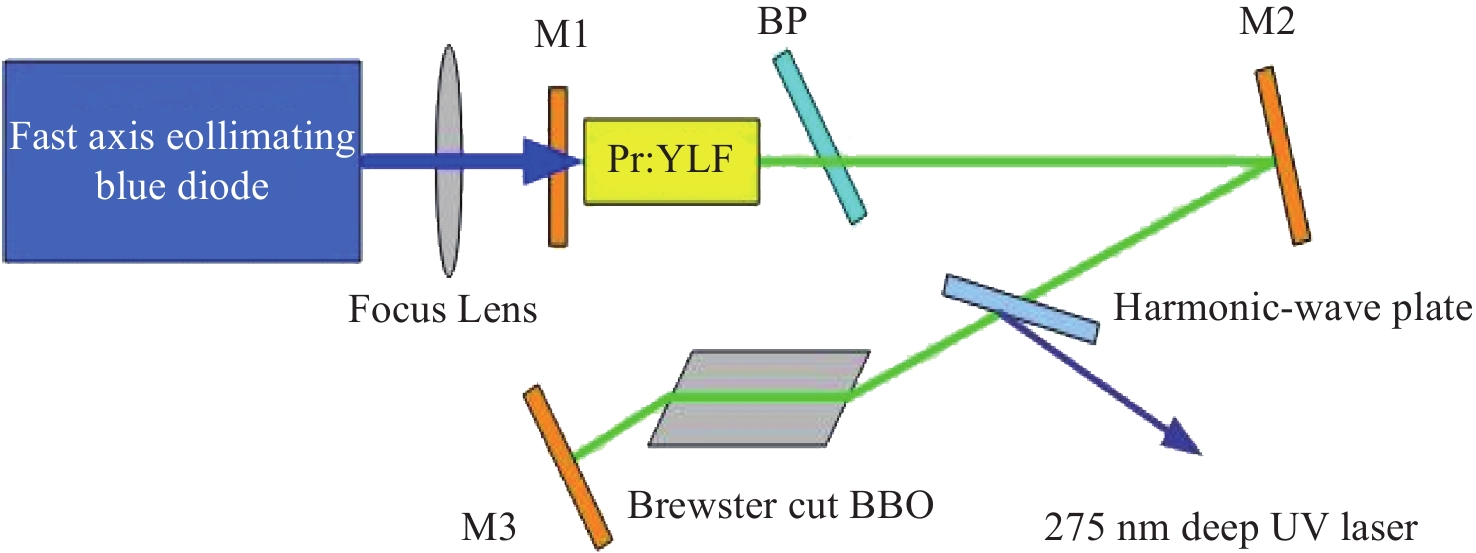275 nm ultraviolet laser with 351 mW continuous-wave output in a Pr:YLF laser pumped by a blue laser diode at 444.2 nm
doi: 10.37188/CO.EN-2024-0024
-
摘要:
本文创新性地采用蓝光半导体泵浦掺镨氟化钇锂晶体产生550 nm激光,并通过高效倍频技术,获得275 nm连续紫外激光输出。采用全新的快轴准直的蓝光半导体激光器作为泵浦源,结合折叠腔和新颖的镀膜技术,并采用布切的BBO晶体进行腔内倍频,获得了351 mW的275 nm基模深紫外激光输出。目前为止,这是首次基于掺镨氟化钇锂获得275 nm激光的报道。
Abstract:This paper describes what is thought to be the first generation of a continuous wave deep ultraviolet laser at 275 nm by efficient frequency doubling of a blue-diode-pumped Pr:YLF laser at 550 nm. By employing a novel fast-axis collimated blue semiconductor laser as the pump source, combined with a folded cavity and innovation coating technology, and utilizing a Brewster-cut BBO crystal for intracavity frequency doubling, TEM00 mode deep UV laser radiation at 275 nm with an output power of 351 mW is obtained. This marks the first report of achieving 275 nm laser generation based on Pr:LiYF4 to date.
-
Key words:
- CW ultraviolet laser /
- 275 nm laser /
- Pr:YLF /
- frequency doubling
-
-
[1] DIEKE G H, CROSSWHITE H M. The spectra of the doubly and triply ionized rare earths[J]. Applied Optics, 1963, 2(7): 675-686. doi: 10.1364/AO.2.000675 [2] KRÄNKEL C, MARZAHL D T, MOGLIA F, et al. Out of the blue: semiconductor laser pumped visible rare-earth doped lasers[J]. Laser & Photonics Reviews, 2016, 10(4): 548-568. [3] METZ P W, REICHERT F, MOGLIA F, et al. High-power red, orange, and green Pr3+: LiYF4 lasers[J]. Optics Letters, 2014, 39(11): 3193-3196. doi: 10.1364/OL.39.003193 [4] LUO S Y, YAN X G, CUI Q, et al. Power scaling of blue-diode-pumped Pr: YLF lasers at 523.0, 604.1, 606.9, 639.4, 697.8 and 720.9nm[J]. Optics Communications, 2016, 380: 357-360. doi: 10.1016/j.optcom.2016.06.026 [5] FENG K, WANG D, ZHU Y ZH, et al. Simple and compact high-power continuous-wave deep ultraviolet source at 261 nm based on diode-pumped intra-cavity frequency doubled Pr: LiYF4 green laser[J]. Optics Express, 2023, 31(12): 18799-18806. doi: 10.1364/OE.489101 [6] ZHU P F, ZHANG CH M, ZHU K, et al. 303 nm continuous wave ultraviolet laser generated by intracavity frequency-doubling of diode-pumped Pr3+: LiYF4 laser[J]. Optics & Laser Technology, 2018, 100: 75-78. [7] HAN Y, GUO K, ZHAO Y Q, et al. Compact high-power 320-nm continuous-wave single-frequency laser based on power scaling of a diode-pumped Pr: LiYF4 ring laser at red[J]. Optics Letters, 2024, 49(14): 3854-3857. doi: 10.1364/OL.528102 -





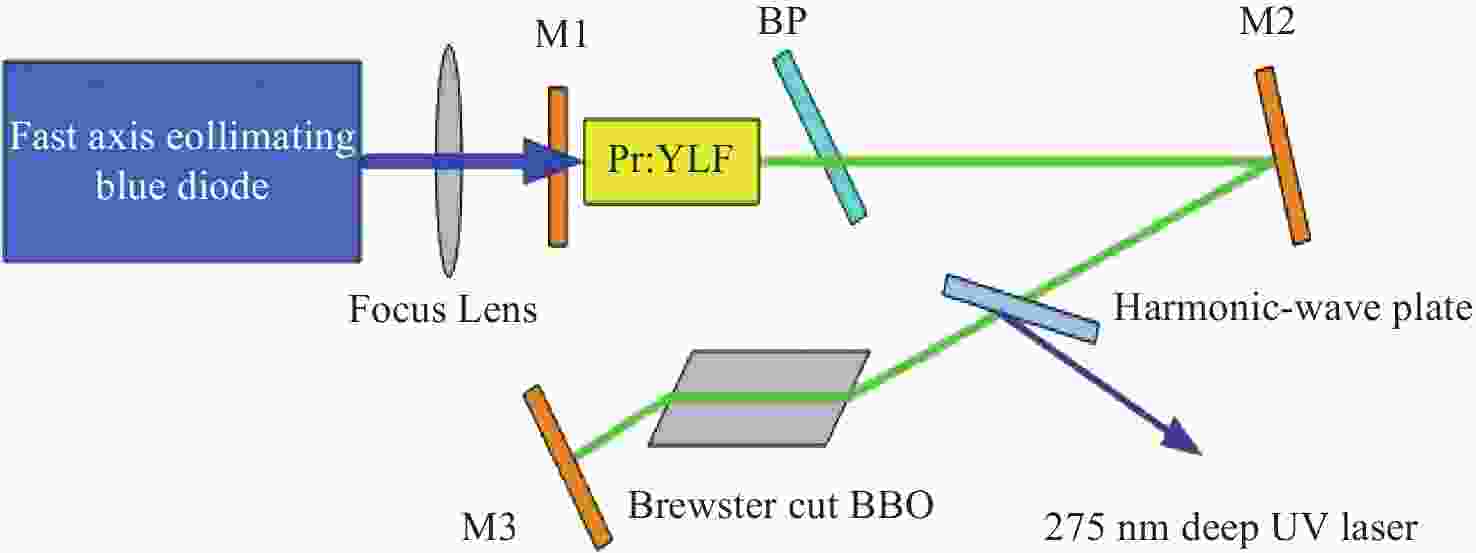
 下载:
下载:


